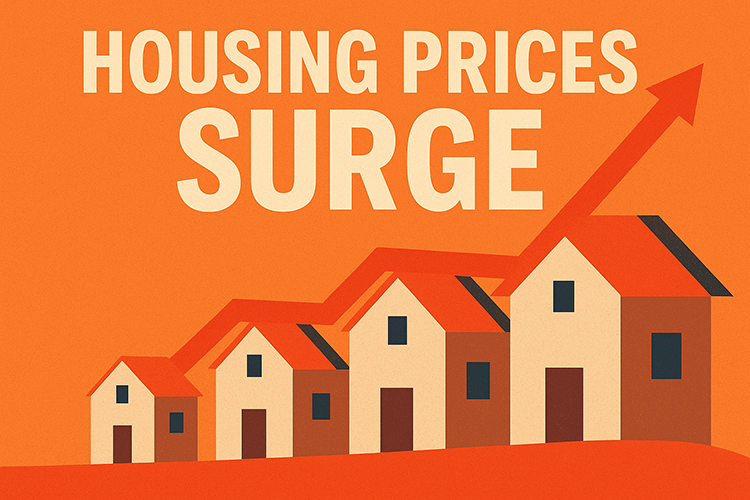Slovakia’s housing prices surge amid market shift and demographic pressures
The Slovak real estate market is showing renewed signs of activity, with property prices increasing significantly in early 2025. According to the Statistical Office of the Slovak Republic, real estate prices in the first quarter rose by 13% year-on-year—the first double-digit increase since the third quarter of 2022.
This upward trend reflects growing demand in the housing market, supported by a gradual reduction in mortgage interest rates and a strong labor market, according to Matej Horňák, an analyst at Slovenská Sporiteľňa. However, he also highlights that the market is constrained by a limited housing supply, which continues to lag behind the country’s needs.
New properties recorded a 10% year-on-year increase, while prices for existing homes rose by 14%. Regionally, the most significant jump occurred in the Bratislava region, where prices climbed 27% compared to the previous year. Other regions, including Nitra, Košice, Žilina, and Prešov, also reported double-digit growth rates.
A contributing factor to the recent acceleration in housing prices is the recovery in mortgage lending. In April 2025, newly issued mortgage loans exceeded €680 million, the highest monthly volume since 2022. The average interest rate on new mortgages has dropped to 3.7%, down by 0.8 percentage points from its peak in the previous year. These developments are providing additional momentum to the housing market.
However, the supply side remains weak. Building activity is slowing, with a 15% year-on-year decline in housing starts and a 16% drop in the number of completed dwellings in the final quarter of 2024. As a result, new supply is not keeping pace with growing demand.
Horňák points out that Slovakia also faces structural challenges. With an average household size of 3.1 people—well above the EU average of 2.3—there is a clear need for more, and more affordable, housing. The current combination of strong demand, a favorable labor market, lower borrowing costs, and limited supply continues to push prices upward.
At the same time, the gap between housing prices and household incomes is widening again, which could act as a moderating force on future price increases. Horňák cautions that despite the current growth phase, the market will eventually face structural changes linked to Slovakia’s shifting demographics.
In the long term, population decline and ageing are expected to reshape housing demand. Changes in preferences related to space, accessibility, and amenities will affect both the type and quantity of housing required. “Over time, these demographic shifts may ease pressure on the market,” Horňák concluded.
Source: SITA









